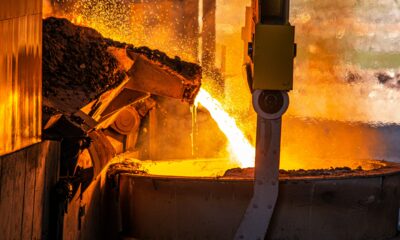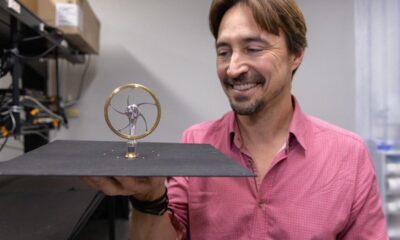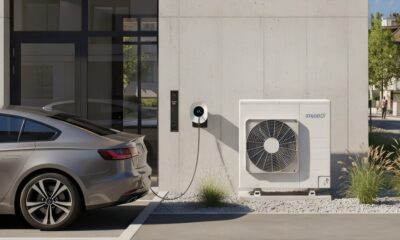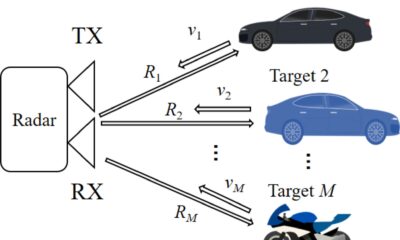Tech
Waymo is hitting the highway. Here’s what to know about the robotaxi’s expanded service
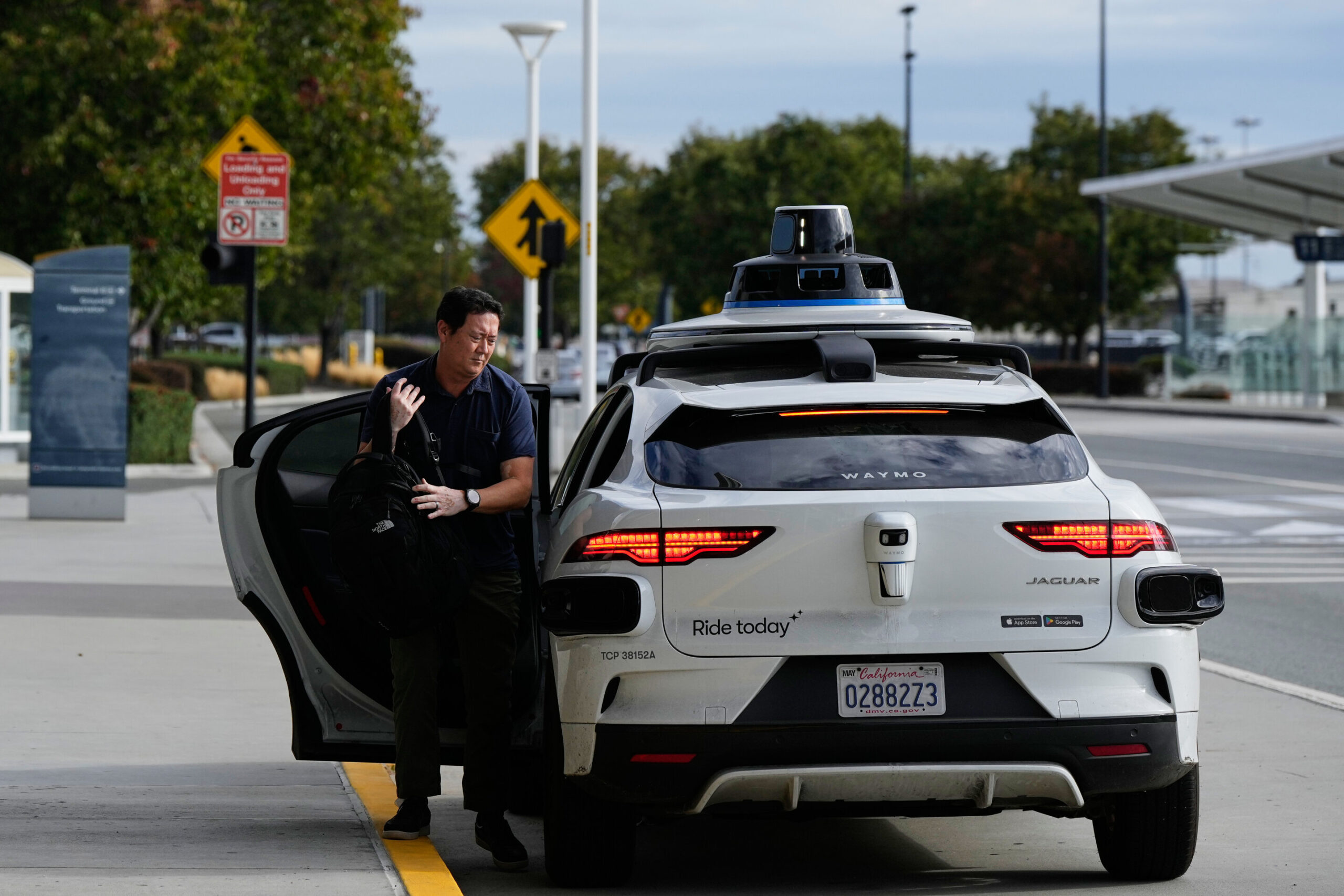
Waymo is hitting the highway. The company said starting Wednesday its robotaxis—already a common sight on some city streets—are expanding their routes to freeways and interstates around San Francisco, Los Angeles and Phoenix. And in the Bay Area, riders can now get dropped off or picked up curbside in driverless cars at San Jose Mineta International Airport. Other regions will get highway service soon, Waymo said.
Expanded service for driverless cars
The highway rollout will be gradual in LA, where Waymo cars with nobody in the driver’s seats are increasingly common downtown and in many residential neighborhoods. But around San Francisco as of this week, the expansion encompasses the entire peninsula to the south of the city, including Silicon Valley hot spots like Palo Alto and Mountain View. Passengers can now hail an autonomous sedan near San Francisco City Hall and take it 45 miles (72 km) on U.S. 101 to San Jose’s airport. Waymos are currently being tested at San Francisco International Airport for eventual curbside service there.
Before deciding to compete against conventional ride-hailing pioneers Uber and Lyft in California, Waymo—owned by Google’s parent company, Alphabet—unleashed its robotaxis in Phoenix in 2020. Now it has extended the reach of its service to highways around that Arizona city.
Down the road, passengers in Atlanta and Austin, Texas, will be able to take freeway rides, the company said.

Waymo has little competition so far
Waymo has come a long way since Google began working on self-driving cars in 2009 as part of project “Chauffeur.” Since its 2016 spinoff from Google, Waymo has established itself as the leader in a robotaxi industry that’s slowly getting more congested.
Amazon announced in June that it’s gearing up to make as many as 10,000 robotaxis annually at a plant near Silicon Valley as it prepares to challenge Waymo. Amazon began eyeing the market five years ago when it shelled out $1.2 billion for self-driving startup Zoox. In September, Zoox launched its robotaxi service in Las Vegas on a limited basis.
Electric auto pioneer Tesla has said it aims to launch a rival “Cybercab” service by 2026. The projected timeline for competing against Waymo has been met with skepticism because Tesla CEO Elon Musk has made unfulfilled promises about the company’s self-driving car technology for nearly a decade.
General Motors late last year retreated from the robotaxi business and stopped funding its money-losing Cruise autonomous vehicle unit. Instead the Detroit automaker is focusing on development of partially automated driver-assist systems for personal vehicles like its Super Cruise, which allows drivers to take their hands off the steering wheel.

Autonomous vehicles are doing many jobs
Residents of San Francisco, Los Angeles and other cities who order a pizza or burrito on DoorDash might have it delivered by a robot that the company has dubbed Dot. Soon people in Phoenix will also get Dot deliveries as the company expands its autonomous service. The robot can reach speeds of up to 20 miles per hour and travel on streets, sidewalks and driveways. Dot is bright red, resembles a big baby stroller and is large enough to handle up to six large pizza boxes or 30 pounds of cargo.
San Francisco-based DoorDash decided to develop its own robot after finding that other delivery machines on the market, which are mostly designed for short runs on college campuses or urban sidewalks, weren’t capable of operating in suburban neighborhoods.
DoorDash has also been testing drone delivery for several years in Australia, Texas and North Carolina.
On a larger scale, the shipping giant Maersk uses driverless electric cargo handlers at four terminals at the twin ports of Los Angeles and Long Beach, the nation’s largest dockyard.
-

A passenger inside a Waymo vehicle looks out of the window while leaving the San Jose Mineta International Airport, Wednesday, Nov. 12, 2025, in San Jose, Calif. Credit: AP Photo/Godofredo A. Vásquez
-

A Waymo vehicle waits as a pedestrian walks on a crosswalk at the San Jose Mineta International Airport, Wednesday, Nov. 12, 2025, in San Jose, Calif. Credit: AP Photo/Godofredo A. Vásquez
Safety concerns
The proliferation of autonomous vehicles has of course raised safety concerns. A new California law that kicks in next year will help authorities to hold driverless car companies responsible for traffic violations. Supporters of the legislation say it is an essential step toward bringing liability and enforcement measures in line with advancing technology.
The law comes after police in San Bruno, south of San Francisco, tried to ticket a self-driving vehicle for an illegal U-turn earlier this year. The police department said in a now-viral social media post that officers stopped the vehicle, but declined to write a ticket as their “citation books don’t have a box for ‘robot’.” Police contacted Waymo to report what they called a “glitch,” and in the post, they said they hope reprogramming will deter more illegal moves.
Waymo has said the company’s autonomous driving system is closely monitored by regulators.
© 2025 The Associated Press. All rights reserved. This material may not be published, broadcast, rewritten or redistributed without permission.
Citation:
Waymo is hitting the highway. Here’s what to know about the robotaxi’s expanded service (2025, November 13)
retrieved 13 November 2025
from https://techxplore.com/news/2025-11-waymo-highway-robotaxi.html
This document is subject to copyright. Apart from any fair dealing for the purpose of private study or research, no
part may be reproduced without the written permission. The content is provided for information purposes only.
Tech
Humidity unlocks hidden power of ions in generating static electricity
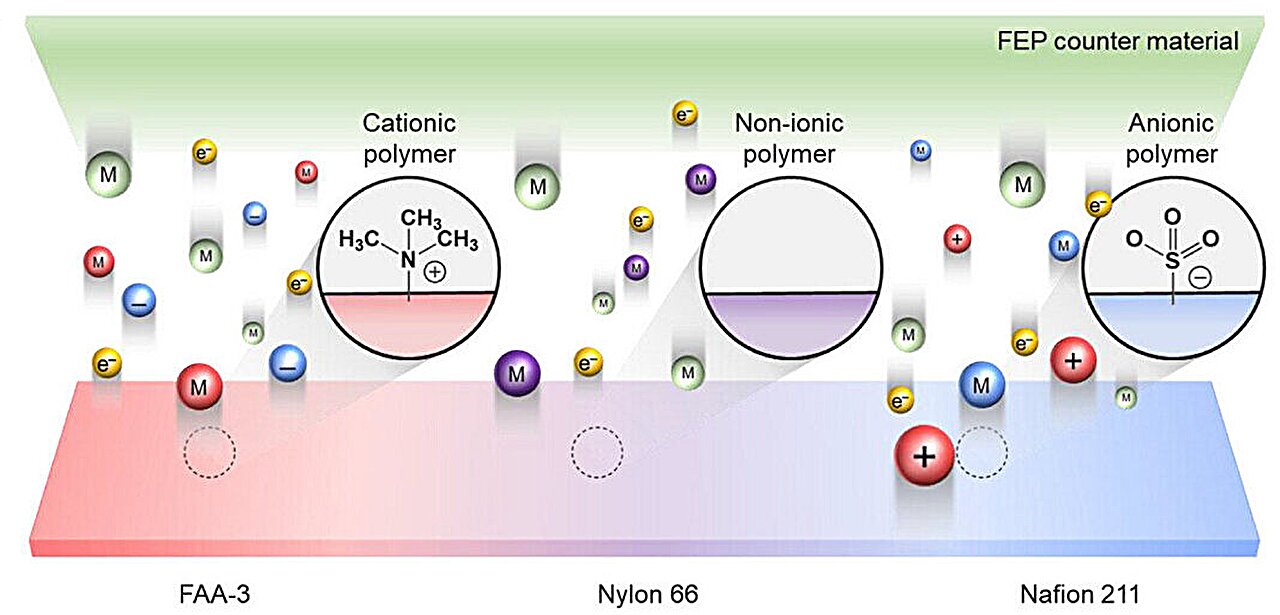
Professor Dong-Myeong Shin and his team from the Department of Mechanical Engineering under the Faculty of Engineering at the University of Hong Kong (HKU) shed light on the contribution of ions in electric charge transfer, though their contribution differs with environmental humidity.
This discovery adds new insights into contact electrification, the phenomenon where static electricity is generated when two different materials touch and then separate. This effect is important for many technologies, including photocopiers, spray painting, energy collection, and self-powered sensors.
Challenging old beliefs about charge transfer
In their study, titled “Quantifying Electron and Ion Transfers in Contact Electrification with Ionomers,” published in Advanced Functional Materials, the team presents evidence that both electrons and ions are transferred at the same time when two solid surfaces come into contact. This challenges the long-held belief that only electrons are responsible for generating static electricity.
The researchers tested three types of films—an anionic ionomer called Nafion 211, a cationic ionomer named FAA-3, and a non-ionic polymer called Nylon—by rubbing them against a fluorinated ethylene propylene (FEP) film.
They analyzed how charges decayed under heat and used advanced techniques to detect surface ions. This allowed them to measure how much electrons and ions contributed to the charge transfer.
Humidity’s surprising role in ion transfer
It was discovered that different ionomer materials displayed distinct charge-transfer behaviors, with humidity greatly amplifying the role of ions. At a relative humidity level of above 50%, ion transfer not only enhanced surface charge density but also offset the depletion usually caused by moisture.
Remarkably, even though less than 2% of the ions actually moved across the interface, their impact was surprisingly large—they played a key role in stabilizing and strengthening static charges. To understand how this happens, the team used computer simulations, which revealed that water molecules absorbed into the ionomer formed tiny channels inside the material. These channels allowed ions to move more freely toward the surface, especially in humid conditions.
Implications for technology and materials
“This is the first time we could unambiguously separate and measure the contributions of electrons and ions in solid contact electrification,” said Dr. Xiaoting Ma, co-first author of the paper.
“By using Nafion and FAA films as model systems, we gained unique insights into how positive and negative ions behave differently depending on humidity.”
Professor Shin highlighted the broader impact: “By quantifying how much electrons and ions transfer during contact, we can develop new strategies to create materials that work reliably even in humid environments. This not only advances fundamental scientific understanding but also opens up new possibilities for eco-friendly technologies such as printing, coating, environmental monitoring, and energy harvesting.”
The team also found that introducing ions onto a non-ionic polymer surface significantly improved its resistance to humidity, offering a practical strategy for engineering robust triboelectric materials.
After integrating Nafion and FAA films into triboelectric nanogenerators (TENGs), the devices showed stable output even in humid environments, successfully powering an array of 78 LEDs and maintaining performance over thousands of cycles.
More information:
Xiaoting Ma et al, Quantifying Electron and Ion Transfers in Contact Electrification with Ionomers, Advanced Functional Materials (2025). DOI: 10.1002/adfm.202506471
Citation:
Humidity unlocks hidden power of ions in generating static electricity (2025, November 13)
retrieved 13 November 2025
from https://techxplore.com/news/2025-11-humidity-hidden-power-ions-generating.html
This document is subject to copyright. Apart from any fair dealing for the purpose of private study or research, no
part may be reproduced without the written permission. The content is provided for information purposes only.
Tech
From sewer to furnace: How wastewater sludge is greening steel production
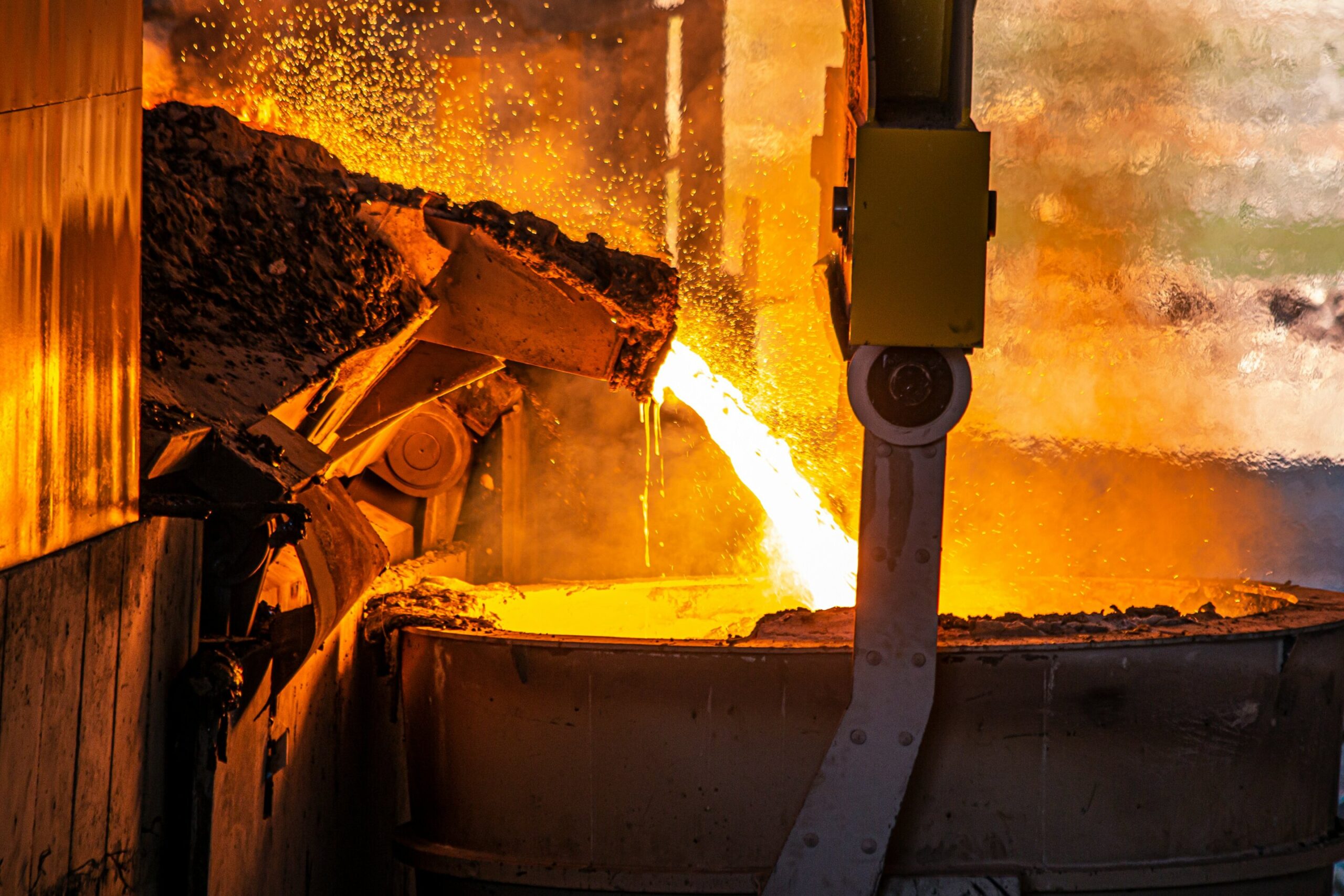
By turning wastewater sludge into biocoal and green hydrogen, EU researchers are helping reduce the steel industry’s environmental impact.
What comes out of our wastewater treatment plants may not be very appealing, but the real problem is what is left behind after water treatment. Wastewater plants produce a liquid sludge that is usually dried and then burned or dumped. This is costly, polluting, and has long been considered wasteful.
A group of researchers see it differently. This sludge, they argue, could become an unlikely ally in the fight against climate change—a feedstock for producing the hydrogen and carbon needed to make greener steel.
“This sludge has value, it is not just waste,” said David Chiaramonti, professor of energy systems, energy economics and bioeconomy at the Polytechnic University of Turin in Italy. “With it we can create things like carbon and hydrogen.”
Towards green steel
Chiaramonti is leading an EU research initiative called H2STEEL that brings together academics and steel industry experts from France, Italy, the Netherlands, Spain and the UK. Their goal is to design a process to extract the useful materials from wastewater sludge so that they can be reused and help reduce the steel industry’s emissions.
Steel production is essential for everything from airplanes and cars to buildings and wind turbines. It is also a major driver of climate change.
According to a 2023 report by the International Energy Agency, the steel sector alone accounts for 8% of global CO2 emissions. By comparison, the aviation industry emits about 2.5% of global CO2 emissions.
Cutting these emissions is particularly difficult. Steelmaking is complex and typically requires carbon-rich ingredients, which inevitably release greenhouse gases. That makes it one of the hardest industries to decarbonize—and one of the most expensive to transform.
Traditional steel production methods face increasing carbon pricing pressures across Europe under the EU’s Emissions Trading System. According to market forecasts, carbon prices could reach €120–150 per metric ton of CO2 by 2030, potentially adding significant costs per ton of steel produced.
For a global steel market worth more than €2.5 trillion annually, finding affordable low-carbon alternatives is urgent.
Hot sludge
This is where H2STEEL comes in. “It’s a good example of the circular economy,” said Chiaramonti. “We take a little-used resource, wastewater sludge, and make it useful again.”
The process works in two main steps. First, sludge is heated without oxygen to create biocoal, in a process called “carbonization.” Then methane from biogas plants is processed using this biocoal as a catalyst to produce hydrogen.
During this process, the biocoal becomes even richer in carbon, making it valuable for steelmaking. Another by-product, phosphorus, is separated for use in fertilizers.
Both outputs—hydrogen and carbon-rich biocoal—could help make steel cleaner. Traditional steelmaking burns coal with iron ore, releasing CO2. With H2STEEL’s approach, hydrogen can replace some of that coal. Meanwhile, the biocoal substitutes regular coal, turning waste into a useful industrial input.
The team is now building a 4-meter-tall processing machine in Turin to demonstrate the technology. “We break the biomethane into carbon and hydrogen by using the carbonized sludge at 900°C,” explained Chiaramonti. “That’s how we turn it into biocoal and circular hydrogen.”
Carbon and hydrogen
Official results are not available yet for the project, which will finish in March 2026, but the potential is significant.
Decarbonizing steel is attracting intense research efforts, from electrical furnaces to hydrogen-based processes. H2STEEL’s sludge-based approach could slot into this wider transformation.
“This technology is very flexible,” said Jan Wiencke, team leader for sustainable carbon at steelmaker ArcelorMittal’s research center in Maizières, northern France.
Headquartered in Luxembourg, ArcelorMittal is the second-largest steel producer in the world.
The company is also a partner in the H2STEEL project and hopes to be able to use the technology being developed at their steel plants.
“Whether we use a hydrogen furnace or an electrical one, we will still need ingredients like carbon and hydrogen in our processes,” said Wiencke.
“With this technology we can already reduce emissions now, and it will continue to be useful in the future.”
Other partners include Leiden University in the Netherlands and Imperial College London.
Next steps
One of H2STEEL’s biggest advantages is speed. If trials succeed, the technology could be rolled out within a few years—unusually fast in an industry where infrastructure changes often take decades.
Still, challenges remain. “We need to secure the sludge, transform it, and deliver it to the steel plants,” said Chiaramonti. Setting up supply chains and minimizing costs will be crucial.
ArcelorMittal, which aims to be carbon neutral by 2050, is watching closely. “This is a great technology for the steel industry, but it must prove itself economically,” said Wiencke.
A patent is already pending, and the partners are eager to see results from the demonstrator. “What we’re doing looks very promising,” said Chiaramonti. “Now it’s a question of taking the last steps.”
If successful, H2STEEL could deliver more than a technical breakthrough. By turning waste into valuable raw materials, it embodies the principles of the circular economy, helping Europe stay competitive while moving closer to its net-zero goals.
Citation:
From sewer to furnace: How wastewater sludge is greening steel production (2025, November 13)
retrieved 13 November 2025
from https://techxplore.com/news/2025-11-sewer-furnace-wastewater-sludge-greening.html
This document is subject to copyright. Apart from any fair dealing for the purpose of private study or research, no
part may be reproduced without the written permission. The content is provided for information purposes only.
Tech
Our Impatient Coffee Lover Found the Best Pod Coffee Maker

I was really annoyed when I realized that Nespresso sent me this brewer in black. Champagne problems, I know—but this brewer comes in so many delightful colors, from deep red and orange to pastel lavender and pink. It looks cute on your countertop with its little rounded figure and relatively short stature. The Nespresso Vertuo Pop+ can handle all Vertuo coffee pods. The pods are aluminum and can be recycled by ordering free recycling bags or taking them to a drop-off location. To brew, simply open the machine by twisting the lock on the lid, choose a capsule, and press the button. You can physically move the adjustable drip tray between two ladder-like rungs on the front of the machine. There’s also a companion app that gives you maintenance alerts, video walk-throughs, and easy pod reordering.
Closing and locking the machine, or pressing the coffee button while the machine is locked, will start a heating cycle that takes about 30 seconds. The machine automatically recognizes the capsule you insert, and it extracts brew size based on the capsule as well. For example, espresso capsules will brew 1.35 ounces, double espresso capsules brew 2.7 ounces, and coffee capsules brew 8 ounces. This is different from other machines where you select the capacity you want. In the app you can make minor tweaks, such as making espresso shots shorter or longer. You can press the coffee button to end brewing early (a very handy trick if you accidentally use a 6-ounce mug for an 8-ounce brew, which I may or may not have done.) The machine has a waste basket that’ll automatically collect spent capsules. I’m not a huge fan of Nespresso’s flavored coffee and espresso capsules, simply because I would rather make traditional coffee and then add any whimsical flavorings later to suit my tastes. But if you prefer your coffee with a side of caramel or gingerbread or almond or some other decadent altering, there are many flavored options for you.
With plain old coffee and espresso capsules, I found myself pleasantly surprised by the body and mouthfeel of the drinks. Technically, these espresso pods are not making espresso. But it’s a darn close espresso-like beverage, and you can get it without needing an entire separate machine with a tamping weight and a portafilter and a pressure gauge. And the coffee is on par or slightly better than other machines I’ve tried, with a nice acidic bite that isn’t too watered down. If convenience is what you seek, this do-it-all machine is worth a look.
I was sent the bundle that comes with an optional milk frother. I like having the option, but be aware that it will take up another wall outlet. But the Aeroccino was easy to use—pour in your milk of choice and press the button. It’ll heat and froth your milk automatically—it takes about a minute and it’s whisper-quiet. Every Nespresso capsule I’ve tried has featured a thick layer of crema, and having whipped, thick milk on top of it made my average cup of coffee a more elevated experience.
| Brew capacities | 1-12 ounces |
| Available colors | 14 |
| Dimensions | 8.6″D x 14″W x 10.4″H |
| Warranty | 1 year |
| Recycling information | Capsules are recyclable |
-

 Business1 week ago
Business1 week agoGST rationalisation impact: Higher RBI dividend expected to offset revenue shortfall; CareEdge flags tax pressure – The Times of India
-

 Tech1 week ago
Tech1 week agoBlood Tests for Alzheimer’s Are Here
-

 Business1 week ago
Business1 week agoSetback for expatriates? Delhi HC upholds mandatory EPFO membership; what this means for foreign staff – The Times of India
-

 Fashion1 week ago
Fashion1 week agoBangladesh Bank allows foreign currency-taka swap facility for dealers
-

 Politics1 week ago
Politics1 week agoTrump links Republicans’ election setbacks to record US govt shutdown
-

 Tech1 week ago
Tech1 week agoZohran Mamdani Just Inherited the NYPD Surveillance State
-

 Tech1 week ago
Tech1 week agoThe AI Data Center Boom Is Warping the US Economy
-

 Sports1 week ago
Sports1 week agoPeat wows in debut as Arizona beats No. 3 Florida




